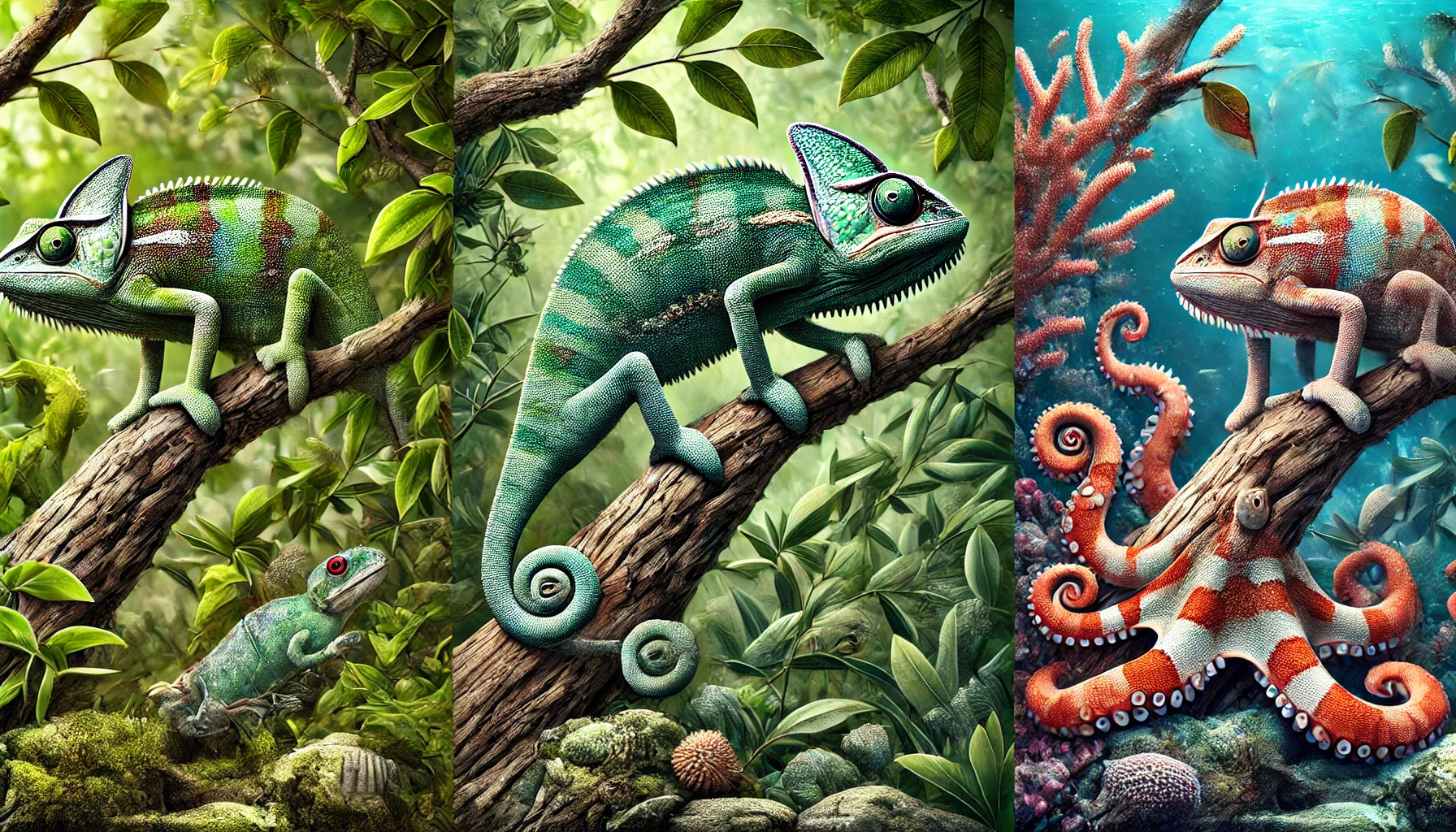In the wild, the ability to blend into one’s surroundings can mean the difference between life and death. Nature’s best impersonators, the masters of camouflage animals, exhibit astonishing adaptations that allow them to hide in plain sight. These creatures not only fascinate with their disappearing acts but also offer insights into evolutionary biology and environmental interactions.
The Art of Camouflage in the Animal Kingdom
Camouflage is a complex survival strategy employed by various species to evade predators or sneak up on prey. This technique involves coloration, patterns, and sometimes even physical modifications to match the environment. From the leafy disguises of insects to the color-changing wonders of cephalopods, camouflage spans a remarkable array of tactics.
Chameleons: Color-Changing Wizards
Chameleons are synonymous with camouflage due to their ability to change skin color rapidly. These reptiles adjust their pigments to reflect their feelings, temperature, and the colors of their environment, making them the epitome of adaptive camouflage. Their unique morphological characteristics, such as swiveling eyes and projectile tongues, complement their stealth tactics, making them adept at ambush predation.
Leaf-Tailed Geckos: Masters of Disguise
Leaf-tailed geckos are exceptional in their ability to blend into forest environments. Their flattened, leaf-shaped tails and body patterns mimic the texture and color of tree bark and foliage. By remaining motionless for hours, these geckos become virtually invisible to both predators and researchers, illustrating the peak of visual mimicry.
Octopuses: The Shape-Shifters of the Sea
Octopuses take camouflage to another level by altering their skin texture and body shape along with color changes. These mollusks can mimic rocks, coral, and even other sea creatures. Their skin contains specialized cells called chromatophores and iridophores that help them achieve these dynamic transformations, crucial for both hunting and hiding.
Implications for Conservation and Research
Studying these masters of camouflage not only sheds light on evolutionary biology but also aids in conservation efforts. Understanding how these animals interact with their environments helps in habitat preservation and informs biodiversity strategies, particularly in areas heavily impacted by human activity.
Conclusion
Nature’s impersonators are not just survivors; they are a testament to the complexity and ingenuity of life. As we delve deeper into their world, we continue to uncover the secrets of their survival, enhancing our appreciation for nature’s artistry and the delicate balance of ecosystems. Check out our wildlife quiz.

